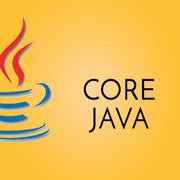Description
The following topics will be covered in IB Chemistry SL Class.
Quantitative Chemistry
- Mole Concept
- Units
- Mole – Particle Conversions
- Molar Mass
- Mole – Mass Conversions
- Balancing Equations
- Mole Relationships in a Chemical Reaction
- Mass Relationships in a Chemical Reaction
- Limiting Reactant
- Determination of Formulae – Gravimetric Analysis
- Mixtures & Solutions
- Making Solutions and Determining Solute Mass
- Kinetic Molecular Theory
- Pressure
- Boyle’s Law
- Pressure Law
- Charles’ Law
- The Combined Gas Law
- Avogadro’s Law
- Avogadro’s Law of Combining Volumes
- Ideal Gas Law
- Yield: Theoretical, Experimental and Percentage
- Empirical & Molecular Formulae
- Calculations from Percentage Information
- Calculations from Empirical Data
- Compounds Containing Oxygen
- Molecular Formula
- Summary Questions
Atomic Structure
- Subatomic Particles
- The Nuclear Atom & Isotopes
- Isotope Notation
- The Mass Spectrometer
- Relative Atomic Mass
- Calculating Relative Average Atomic Mass
- Calculating Natural Abundance
- The Electronic Atom – Basic Structure
- Evidence for Shells – The Hydrogen Spectrum
- Explaining the Hydrogen Spectrum
- The Electronic Atom – Shells & Sub-Shells
- Summary Questions
Periodicity
- Structure of the Periodic Table
- Effective Nuclear Charge
- Trends in the Periodic Table – The Basic Idea
- Atomic Radius
- Ionic Radius
- Atomic vs. Ionic Radii
- Ionization Energy – General Trend
- Electron Affinity
- Electronegativity
- Chemical Properties
- Reactions of Alkali Metals and Halogens
- Reactions of Alkali Metals with Water
- Properties of the Halogens
- Halogens & Halides
- Chemical Properties Across Period 3
- Reactions of the Oxides of Period 3 with Water
- Summary Questions
Bonding
- Bonding vs. Structure
- The Octet Rule
- Types of Bonding
- Ionic Charges & Formulae
- Simple Ionic Compounds – From the Periodic Table
- Transition Metal Compounds
- Is it +2 or 2+?
- Compounds of Polyatomic Ions
- Ionic Compounds & Properties
- Metallic Bonding & Alloys
- Melting Point
- Melting Point of Group 1 – The Alkali Metals
- Covalent Bonding
- Covalent Formulae
- Lewis Structure
- VSEPR Theory & Molecular Shapes I Resonance & Delocalization
- Resonance Stabilization Energy
- Bond Polarity and Molecular Polarity
- Bond Length and Strength
- Allotropes of Carbon
- Intermolecular Forces
- London Dispersion Forces
- Dipole – Dipole Forces
- Dipole – Induced Dipole
- Hydrogen Bonding
- The Layering of Intermolecular Forces
- How do you Determine the type of IMF?
- Types of Solids
- Physical Properties of Solids
- Summary Questions
Energetics
- Endothermic & Exothermic
- Potential Energy Diagrams (Enthalpy Diagrams)
- Standard Conditions
- Calorimetry – Enthalpy Change Calculations
- Assumptions in Calorimetry
- The Calorimeter Constant
- Hess’ Law
- Heat of Hydration
- Bond Enthalpy
- Standard Enthalpy Changes
- Standard Enthalpy of Formation
- Standard Enthalpy of Combustion
- Which Formula do I use?
- Summary Questions
Kinetics
- Rates of Reaction
- Rate Experiments
- Collision Theory
- Factors Affecting Rate of Reaction
Equilibrium
- Dynamic Equilibrium
- Approaching Equilibrium
- Position of Equilibrium
- LeChÂteleir’s Principle
- Reaction Quotient
- The Meaning of Kc
- Determining the Equilibirum Constant, KEQ
- Determining Equilibrium Concentrations
- Summary Questions
Acids & Bases
- Bronsted-Lowry Theory of Acids and Bases
- Properties of Acids & Bases
- H+ (AQ) or H3O+ (AQ)?
- Conjugate Pairs
- Amphoteric Substances
- Strong & Weak
- Distinguishing Between Strong and Weak
- pH Scale
- Acid Deposition
- Buffer Solutions
- Summary Questions
Oxidation & Reduction
- Oxidation Numbers
- Redox Reactions
- Reactivity
- Half Reactions
- Dissolved Oxygen and BOD Definitions
- Voltaic Cells
- Salt Bridge
- Standard Electrode Potentials
- Electrolysis of Molten Salts
- Electrolysis of Solutions
- Factors Affecting Amount of Electrolysis Product
- Balancing Redox Reactions in Acidic Solution
- Summary Questions
Organic Chemistry
- Hydrocarbons
- Naming Hydrocarbons
- Isomers
- Structural Isomers
- Branching in Organic Chemistry
- Alkanes
- Organic Functional Groups
- Functional Groups vs. Classes of Compounds
- Functional Group Isomerism
- Alkenes – Electrophilic Addition Reactions
- Benzene and Derivatives
- Important Isomers
- Halogenoalkanes
- Nucleophilic Substitution Reactions
- Alcohols
- Combustion of Alcohols
- Oxidation of Alcohols
- Alcohol Oxidation Products
- Reduction of Aldehydes, Ketones and Acids
- Functional Groups Containing Nitrogen
- Reduction of Nitriles
- Ester Condensation Reactions
- Reaction Pathways
- Summary Questions
Measurement & Data Processing
- Observations
- Uncertainty in Measurements
- Precision & Accuracy
- Significant Digits
- Rounding of Numbers
- Adding and Subtracting Significant Digits
- Multiplying and Dividing Significant Digits
- Systematic Uncertainty
- Absolute & Relative Uncertainty
- Propagating Uncertainty
- Types of Relationships
- The Formula of a Compound
- Mass Spectroscopy (MS)
- Nuclear Magnetic Resonance
- Infrared Spectroscopy
- X-Ray Crystallography
Key Features:
Training Type: Online Live Interactive Session.
Experienced Faculty.
1 ON 1 Sessions
Access to Class Recordings.
Weekday / Weekend Classes.
Evening Schedule:
2 to 3 Days / Week
8:30 PM – 9:30 PM EST
9:00 PM – 10:00 PM EST
9:30 PM – 10:30 PM EST
10:00 PM – 11:00 PM EST
Morning Schedule:
2 -3 Days / Week
10:00 AM – 11:00 AM EST
10:30 AM – 11:30 AM EST
11:00 AM – 12:00 PM EST
11:30 AM – 12:30 PM EST
Please contact us, If you are looking for different schedule or need more information.
Phone : 1+ 734 418 2465
Email : info@learntek.org
Inquiry Now
USA: +1 734 418 2465 | India: +91 40 4018 1306























 +91 40 4018 1306
+91 40 4018 1306 +1 734 418 2465
+1 734 418 2465 info@learntek.org
info@learntek.org
Reviews
There are no reviews yet.